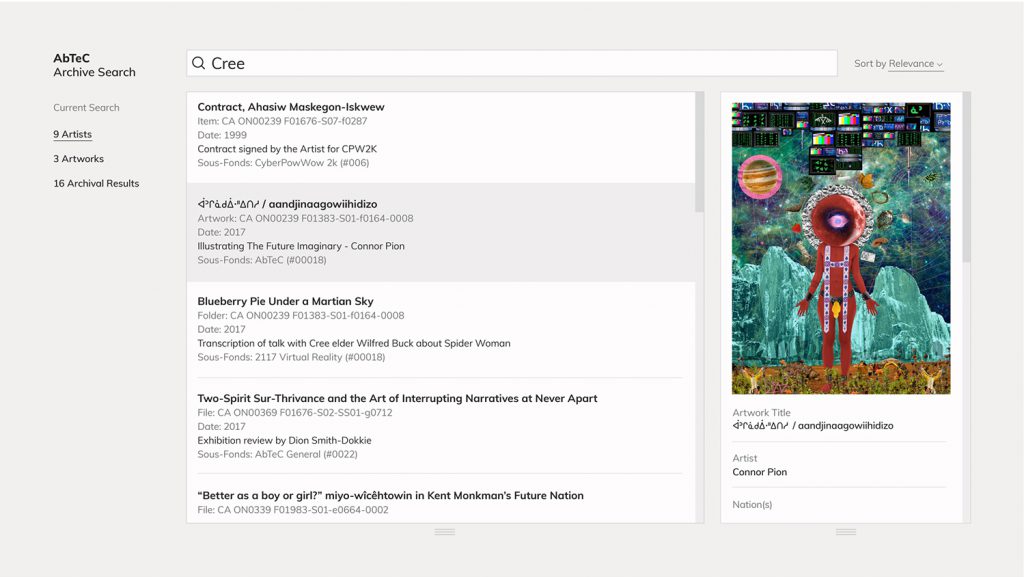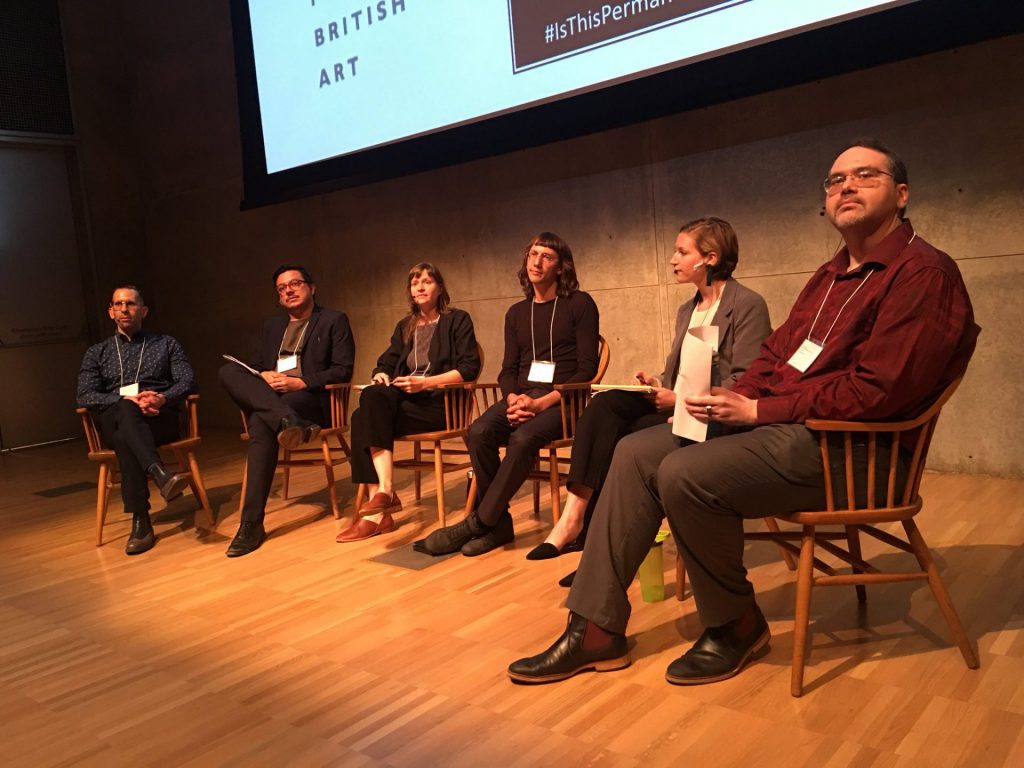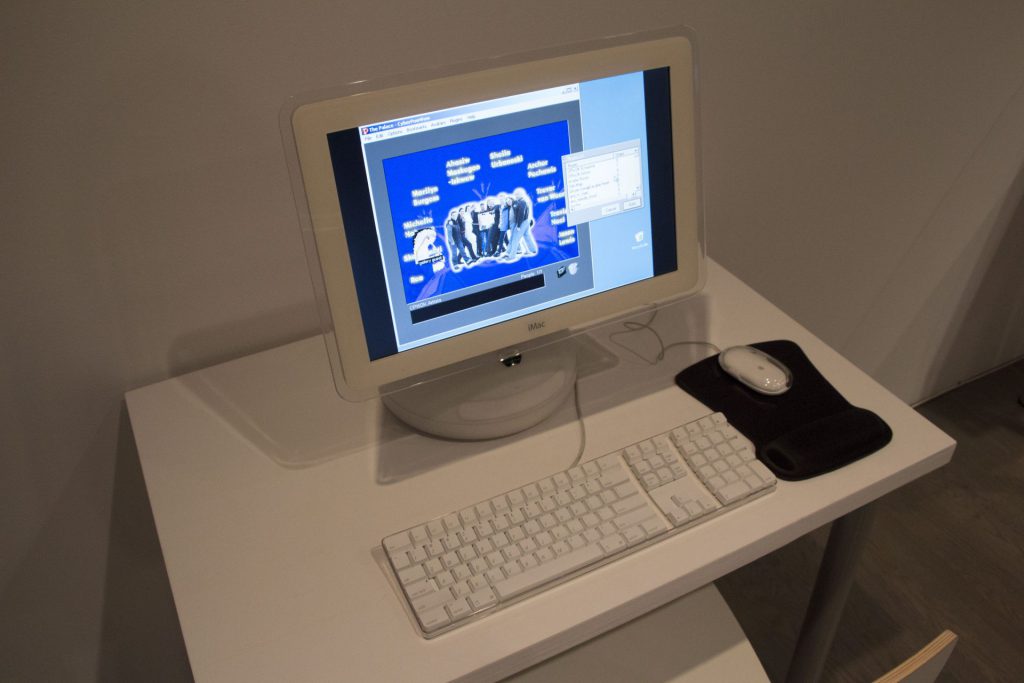Archiving Aboriginal Territories in Cyberspace
by Sara England
November 1, 2018
Archiving Aboriginal Territories in Cyberspace
Floppy disks, hard drives, slides, CDs, tape-based videos, paper materials, photographs — these account for just some of the materials born from Aboriginal Territories in Cyberspace’s twenty plus years of production both on and offline [fig. 1]. These materials give shape to extensive networks of Indigenous artistic creation and collaboration since the beginnings of media experimentation to today, and trace a history of media art with Indigenous makers at the centre. Today, they form the basis of the Aboriginal Territories in Cyberspace archives and the starting point for a much larger project: the Initiative for Indigenous Futures’ Aboriginal New Media Archive.
For the past six months, Mikhel Proulx, RA and PhD student and Art History Department faculty member, and I, research coordinator for AbTeC/IIF, have been sorting materials related to AbTeC’s activities—both in physical and born-digital formats—and sketching out possible ways of organizing and caring for them to ensure accessibility and long-term preservation. The ultimate goal is to develop an archive of the work of Indigenous new media artists, beginning with AbTeC, that is publicly available online but housed locally in the Indigenous Futures Cluster at the Milieux Institute at Concordia University. While there’s much work to be done, we’ve had a busy spring and summer laying the groundwork for the archive project that’s worth sharing!

Is This Permanence: Preservation of Born-digital Artists’ Archives
This past spring, we attended the symposium “Is This Permanence: Preservation of Born-digital Artists’ Archives” hosted at the Yale Center for British Art [fig. 2]. We presented our project alongside archivists, technologists, and curators from major institutions in North America, who, like us, are grappling with the challenges of preserving a wide range of born-digital materials and, at the same time, making these materials, or at least aspects of them, available for public access and engagement. The strategies for preserving digital artist records addressed by these institutions were diverse and, at times, improvisatory as new challenges required new methods in an ever-changing digital landscape.
The Yale conference helped us to conceptualize our project in practical terms like workflow and structure, and to draft a working list of system requirements while we researched various applications for the archive. It also helped to confirm some things we were already doing! John Bell’s (Dartmouth) presentation on practices of digital archiving within online gaming communities was illuminating for its emphasis on community-specific metadata. A historian’s perspective on what information to preserve will be different from a programmer’s, or an artist’s, or a community member’s. Learning how different communities might interact with AbTeC’s archives and the connections between these communities is an important aspect of our project and one that will be further explored in conversation with IIF partners and project stakeholders.

Artist and new media scholar Jon Ippolito delivered the final keynote “Your Archival Format Will Not Save you” in which he discussed the strategy of emulation as a viable means of preserving and experiencing web-based artworks in their original format. An emulator was used to reactivate CyberPowWow—the groundbreaking online chat room and virtual gallery of contemporary Indigenous art—for its presentation in AbTeC’s retrospective Filling in the Blank Spaces, discussed in an earlier post [fig. 3]. The keynote, and our own emulation strategies, emphasize the importance of contextualization (in our case, running CyberPowWow on the original computer program The Palace and through the original browser version) and activation over static and self-contained archival formats. We need for archival formats and archives that, as Ippolito states, “are expansive and creative enough to capture the vibrancy that makes the art of our era worth preserving in the first place.” This, and attending to the particularities of what makes this an Indigenous archive—not just in terms of content but how we build relationships between objects and entities and direct methods of engagement—steer our ongoing work in organizing the Aboriginal New Media Archive.

Artefactual Systems Access to Memory Camp
These broader considerations inform how we determine our practical needs, such as which software to use for the organization and storage of archival descriptions and digital objects. This aspect of the project has been particularly challenging in light of the proliferation of content management systems and tools available, each with their own strengths and unique capabilities. However, we have narrowed our focus to one system created by Artefactual Systems.
Access to Memory (AtoM) is a web-based open-source application for standards-based archival content and a promising option for us to implement. It is easy to navigate, accepts a variety of file types, and is integrated with Archivematica, Artefactual’s digital preservation system. As an open-source software that employs a community-based development model, AtoM is sustained by collaboration, openness and generosity—aspects of research-creation that AbTeC privileges in our own activities.
Last month, Mikhel and I attended a 3-day training and information camp for professionals working with AtoM at Robarts Library in tkaronto/Toronto. We learned the nuts and bolts of the system from inputting archival descriptions to cleaning up messy data and importing in into AtoM. It was useful to see how the system could be used to map social relationships and complexities like nationhood and multiple languages latent in our data.
As this project moves forward, we will continue to demo AtoM and determine an appropriate archival structure that supports our various needs. Further discussions on Indigenous archives and Indigenizing archives with Indigenous archivists and librarians are needed to further flesh out the project’s potentials, in addition to understanding the needs and perspectives of the archive’s users and stakeholders.
A recorded version of Sara and Mikhel’s presentation at “Is This Permanence” is available online, starting at 51:30.
URL: https://britishart.yale.edu/symposium-permanence-preservation-born-digital-artists-archives